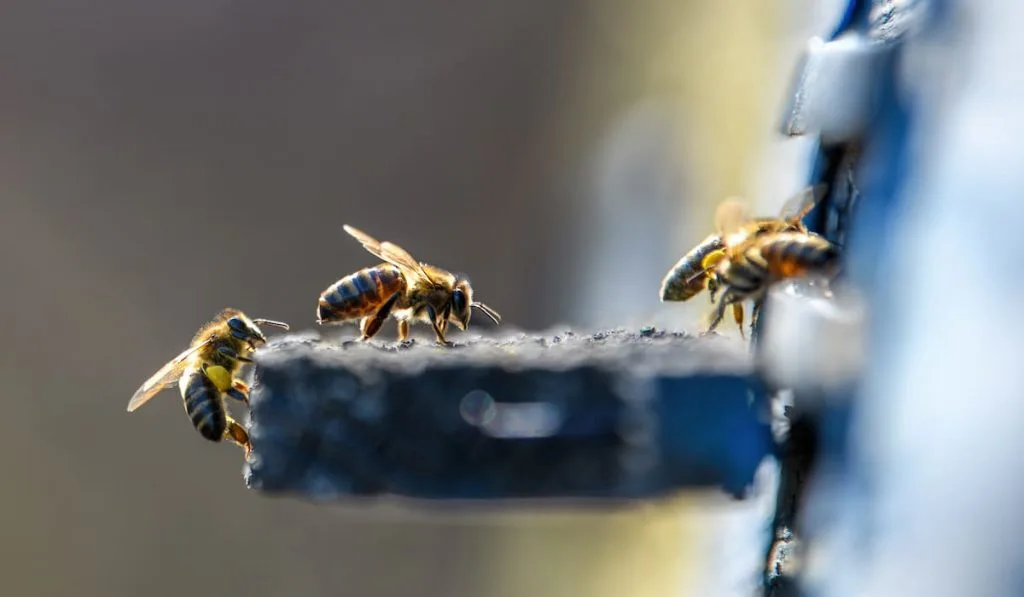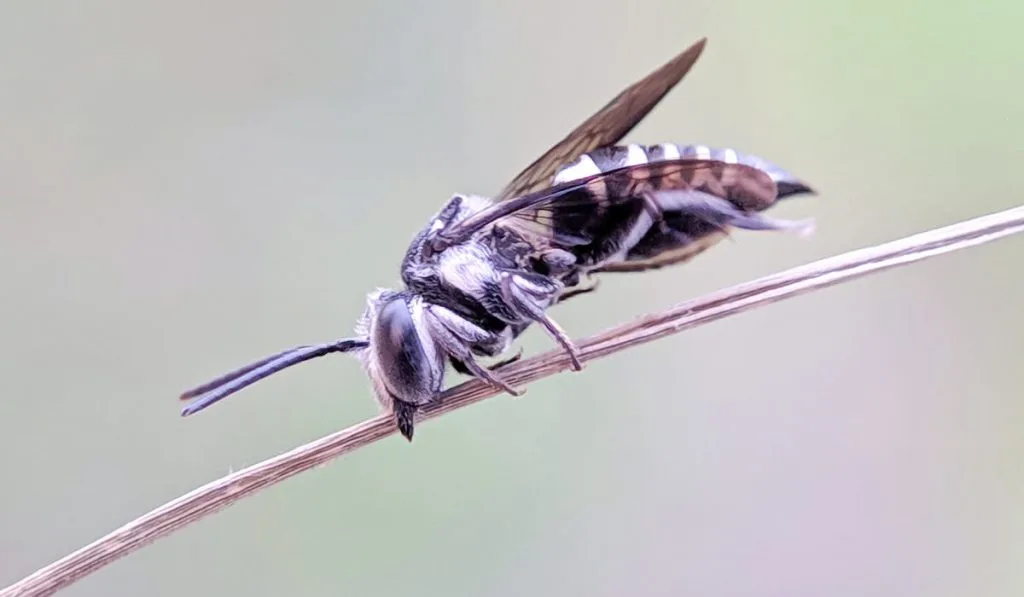*This post may have affiliate links, which means I may receive commissions if you choose to purchase through links I provide (at no extra cost to you). As an Amazon Associate I earn from qualifying purchases. Please read my disclaimer for additional details..
No one likes to be stung by a bee. Almost all of us tend to avoid bees because of their unpredictable nature.
But still, there are instances when bees and humans come face to face. Gardening and mowing the lawn are good examples.
To have a peaceful time in the garden it is necessary to have some knowledge about the bees’ cyclic behaviors. So let’s have a look at a day in a bee’s life.

Table of Contents
What Time Do Bees Wake Up?
Just like humans, bees follow a timetable to carry out their daily work. They have timings of waking up and going back to the hives. But all these patterns are not just coincidental.
They do everything for a reason.
Bee activity is mainly temperature dependant. The time they wake up and go to sleep is dependant on temperature.
They wake up in the morning when the sun shines brightly enough to raise the temperature above 60 F and go back to their hive when it begins to fall below 50 F.
They are usually seen roaming around the gardens in the afternoon. They are busy collecting nectar to feed their young ones and the queen bee.
Other than collecting nectar they also come out of their hives to get rid of waste or take out dead bees.
So the activity time of bees depends on the temperature or the season it is. They are mostly active during the day except for some rare nocturnal species.

What Time Do Bees Go To Sleep?
Having a temperature dependant lifecycle indicates that their sleeping time would also be connected to the surrounding temperature.
After doing the daily job of collecting nectar or cleaning the hive, bees prefer returning home before the sun sets.
But how would bees know it is time to get back to the hive? The answer to this question is, again, temperature.
The reason behind following a fixed sleep/wake pattern is the connection between their physiological behaviors and temperature.
When the temperature starts falling below 50 F closer to the sunset, bees start feeling a little drowsy. This drowsiness pushes the bees to return home as quickly as possible. That is why most bees return home before the sun sets.
Other than sensing temperature changes, changes in light intensity also warn them of the sunset. Their excellent infrared vision enables them to sense even minor changes in the surrounding light.
So when they do sense changes in the surrounding light, that is around an hour before the sunset, they start returning home. Because the bees want to get home safe without getting lost in the dark.
There are some exceptions to this sleeping pattern. Some rare species have been discovered that can actively forage at night with the help of their brilliant eyesight.

Best Time To Mow Lawn To Avoid Bees
Mowing a lawn is one of those instances when you can come face to face with bees.
When you can not fight your enemy you must avoid it. This is generally the case with bees. We all know that if we try to fight bees, we are the ones getting hurt. So it is better to avoid them.
Avoiding the active hours of bees is the best solution to this problem.
Since we know that bees are most active starting from noon till sunset, avoiding these hours is recommended. You can schedule mowing your lawn early in the morning or after sunset.
Bees do not generally wake up very early in the morning, so this tends to be the safest time to mow the lawn.
It is not just about avoiding flying bees but disturbing a beehive can also cost you a lot.
Using lawn mowing equipment can prove to be risky. It is recommended to check your lawn thoroughly for any beehives. Accidently damaging or being a threat to the beehive can cause a bee attack.
Bees do not see things as we do. But still, their vision helps detect any possible threat. From a bee’s point of view, any strong motion, vibration, or sound around their hive is a threat.
So even if the bees are still in the hive, strong vibrations can still invite bees to attack.
So checking your lawn thoroughly and avoiding using lawn mowing equipment very close to the hive is highly recommended.

Best Time To Do Gardening To Avoid Bees
Gardening can also be an event of interaction with bees. Dividing the activity hours is important for the safety of both the gardeners and the bees.
Bees are important pollinators and keeping them completely away from the garden is not recommended. So it is better to work in shifts.
Bees are not active early morning, which allows you to work in the garden peacefully. From watering the plants to cleaning up the garden, everything can be done in the early hours of the day.
When you see the sun shining bright and the temperature rising well, you should know it’s time for the bees to work.
Afternoon is time for the pollinators to do their job. Allow them to visit the flowers peacefully and do not create any hindrance.
If you have a small kitchen garden or a larger one, spraying pesticides becomes a part of the routine as well. The hours after sunset when the bees have returned to their hive is the best time for spraying.
This will not only save you from the bees but also save the bees from the harmful insecticide sprays.
In this way working in shifts will keep both you and the bees safe.
If you want to keep the bees away from your garden completely, an easy way would be avoiding brightly colored or strongly scented flowers.
